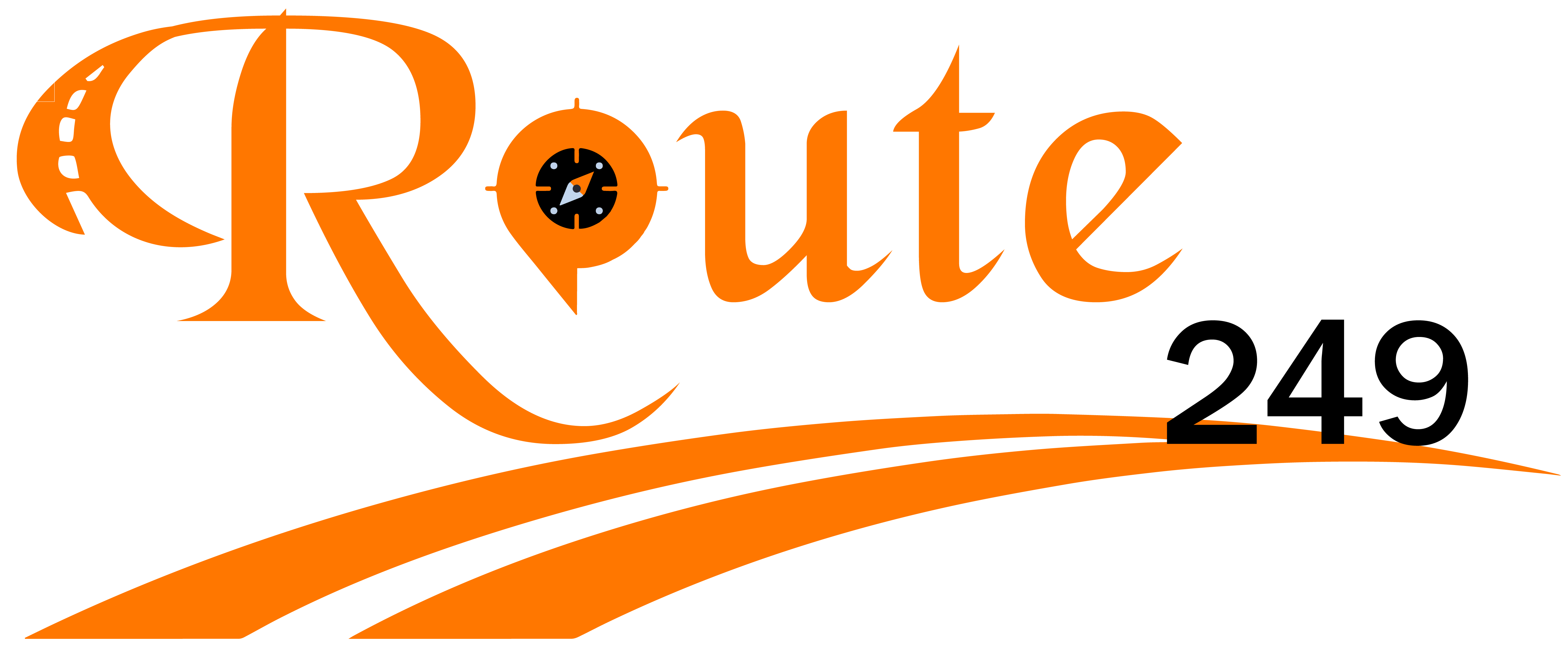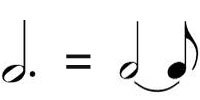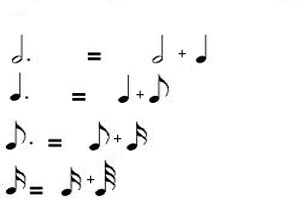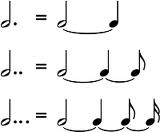Lesson 5
Dotted and Tied Notes
This Lesson will explain what a dotted note and what a tied note is. Above is an example of each. Both of these examples in music would sound the same. In fact, you could just put an equals sign in between them. So, let’s do that and later on in the lesson, we’ll get back to that.
A dotted note and a tied note is just a way to alter the length of a sound. There are differences in them which we will explain. For now, just think of it as a longer lasting note.
A Dotted Note:
A dotted note makes the note’s duration last half again as long. Or another way to put it, it equals one and a half times as long as the note that is dotted. In the example above, a dotted half note lasts as long as a half note and a quarter note added together; a dotted quarter note lasts as long as a quarter note and an eighth note added together; a dotted eighth note lasts as long as an eighth note and a sixteenth note added together; and a dotted sixteenth note lasts as long as a sixteenth note and a thirty-second note added together. So, if you have a “C” note that you are playing, and the note is a dotted quarter note, then the “C” note would ring for the length of time that it would take for a quarter note and an eighth note combined. Or as we learned in Lesson 3, if we were in 4/4 time signature, a dotted half note would last for 3 beats (a half note plus a quarter note).
Notes can also have more than one dots. For each additional dot, you add half again as much. In the example below, a dotted half note equals a half note and a quarter note; a double dotted half note equals the same as a half note, plus a quarter note, plus an eighth note; and a triple dotted half note equals the same as a half note, plus a quarter note, plus an eighth note, plus a sixteenth note. Theoretically it could go on forever, but typically you probably won’t see very many that are more than one dot.
Tied Notes:
Tied notes are similar to dotted notes because it alters the length of a note. A tie is a way to make the note ring an additional length of time. Sometimes (like the example above) it is used to make the note ring beyond the end of the measure. Notes aren’t normally tied together within a measure unless the pitch is being varied. In that case, they call the tied note a slur. As seen below, the note is a slur because the pitch changed.
Let’s examine the example below and imagine that we are playing it on a guitar. Lesson 3 teaches us that this example is in 4/4 time because there are four quarter notes in a measure. And if you remember Lesson 1 (and we are assuming that this staff is using a Treble Clef), the spaces are F-A-C-E and the lines are E-G-B-D-F, so, the slurred note is struck on a “G” note that lasts one beat, then the note is slid up to an “A” note and lasts for one beat, then the note is slid up to a “B” note and lasts for one beat, and then the note is slid up to a “C” note and lasts for one beat. The pick only struck the string on the first note, but the four notes were played and it lasted for a measure of time.
This concludes Lesson 5. I hope you found it to be informative. You should review it and know it. Then go on to Lesson 6. I hope that you understand everything alright. If you have any questions, feel free to ask and I will try to explain it better.
Take Care,
mark










